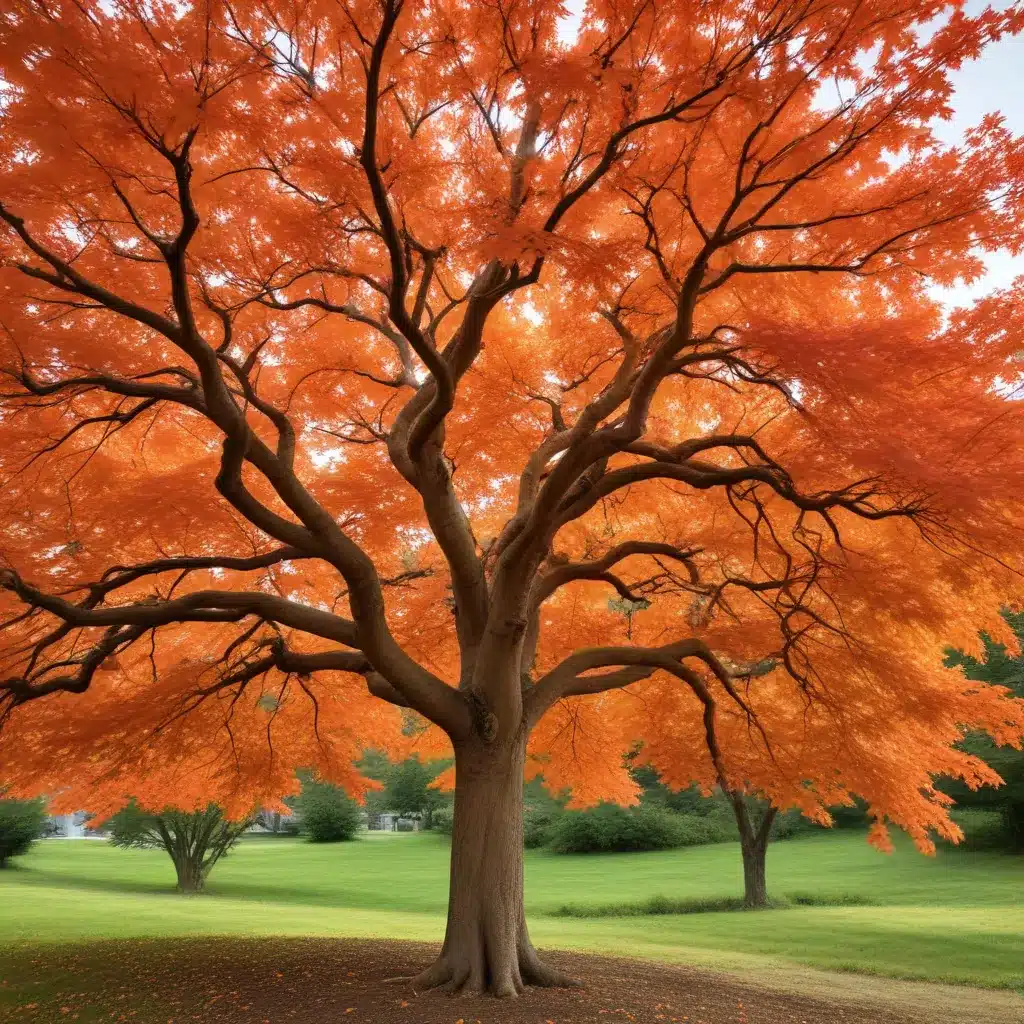
The maple tree, a botanical marvel, stands tall and proud, captivating onlookers with its diverse and captivating characteristics. As a tree care specialist at TriCounty Tree Care, I am privileged to delve into the intriguing world of these remarkable arboreal entities, unveiling their multifaceted versatility.
Maple Tree Characteristics
Botanical Taxonomy
The maple tree (Acer spp.) belongs to the Sapindaceae family, a diverse group of flowering plants known for their distinctive winged fruits, commonly referred to as “samaras.” With over 128 distinct species, the genus Acer encompasses a remarkable range of morphological traits, each species offering a unique contribution to the natural landscape.
Physiological Features
At the core of the maple tree’s allure lies its striking foliage. The leaves, often palmate in shape, display a vibrant array of colors, ranging from the deep green of the sugar maple (Acer saccharum) to the fiery red hues of the Japanese maple (Acer palmatum). These leaves not only captivate the senses but also serve as the foundation for the tree’s remarkable ability to produce the coveted maple syrup.
Growth Habits
Maple trees exhibit a diverse range of growth habits, from the towering stature of the sugar maple, which can reach heights of up to 40 meters, to the more compact and ornamental Japanese maple, which often maintains a delicate, lace-like appearance. The ability of these trees to thrive in a variety of soil types and climatic conditions further underscores their adaptability and resilience.
Maple Tree Products
Wood Products
Maple wood, renowned for its exceptional hardness and durability, has long been prized for its versatility in various industries. From the elegant parquet flooring that graces high-end homes to the intricate cabinetry that adorns fine furniture, the unique grain patterns and warm tones of maple wood have captivated the hearts and minds of woodworkers and architects alike. Additionally, the wood’s resistance to wear and tear makes it an ideal choice for applications such as cutting boards, tool handles, and musical instruments.
Maple Syrup
Undoubtedly, the crown jewel of the maple tree’s versatility is its ability to produce the coveted maple syrup. The sap, harvested during the early spring months, is transformed through a meticulous boiling process into the rich, amber-hued elixir that has become a staple in kitchens worldwide. This natural sweetener not only enhances the flavor of pancakes and waffles but also finds its way into a myriad of culinary applications, from baked goods to savory glazes.
Other Maple Derivatives
Beyond the well-known wood and syrup, the maple tree offers a treasure trove of additional derivatives that showcase its versatility. The leaves, when dried and crushed, can be used as a natural dye, while the sap can be fermented into a maple wine or vinegar. Even the inner bark of the tree has found use in traditional medicine, with some cultures utilizing it for its purported health benefits.
Maple Tree Ecology
Native Range and Habitats
Maple trees are native to the temperate regions of the Northern Hemisphere, with their natural range spanning from North America to Asia. In the United States and Canada, the sugar maple and red maple (Acer rubrum) are particularly ubiquitous, thriving in the deciduous forests that blanket the landscape. Conversely, the Japanese maple has its origins in the mountainous regions of East Asia, where it has become an iconic symbol of Japanese gardens and landscapes.
Maple Tree Associations
The maple tree’s ecological significance extends far beyond its individual attributes. These arboreal giants serve as vital habitats for a diverse array of wildlife, providing shelter, food, and nesting sites for a myriad of species. From the birds that flutter among the branches to the insects that pollinate the flowers, the maple tree’s role in supporting and sustaining local ecosystems is undeniable.
Maple Tree Conservation
As with many natural resources, the maple tree faces various threats, including deforestation, urbanization, and the impacts of climate change. Recognizing the importance of preserving these magnificent trees, numerous conservation efforts have been initiated, ranging from sustainable forestry practices to the establishment of protected habitats. By safeguarding the maple tree’s future, we not only ensure the continuation of its products and ecological benefits but also maintain the rich cultural heritage that these trees have fostered over generations.
Versatile Applications of Maple
Culinary Uses
The maple tree’s versatility extends far beyond its role as a producer of the beloved maple syrup. The leaves, for instance, can be used to impart a delicate, earthy flavor to various dishes, while the sap can be incorporated into marinades, dressings, and even cocktails, adding a subtle sweetness and complexity to the final product.
Industrial Purposes
In the industrial realm, the maple tree’s versatility shines through in its diverse applications. The wood, renowned for its strength and durability, is widely used in the construction of furniture, cabinetry, and even musical instruments, where its resonant properties are highly prized. Additionally, the sap has found use in the production of certain biofuels, showcasing the tree’s potential as a sustainable resource.
Ornamental and Landscaping
Beyond its practical applications, the maple tree has long been celebrated for its aesthetic appeal, making it a popular choice for ornamental and landscaping purposes. The vibrant foliage, which transforms the landscape into a breathtaking display of color during the autumn months, has earned the maple tree a revered status in many cultures, with some species, such as the Japanese maple, becoming iconic symbols of traditional garden design.
The maple tree, with its rich history, diverse products, and ecological significance, stands as a true testament to the wonders of nature. As a tree care specialist at TriCounty Tree Care, I am honored to share the captivating story of this remarkable arboreal wonder, encouraging others to appreciate the versatility and importance of these magnificent trees.


